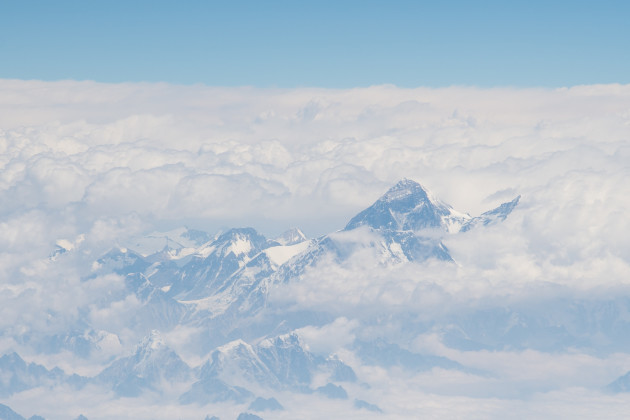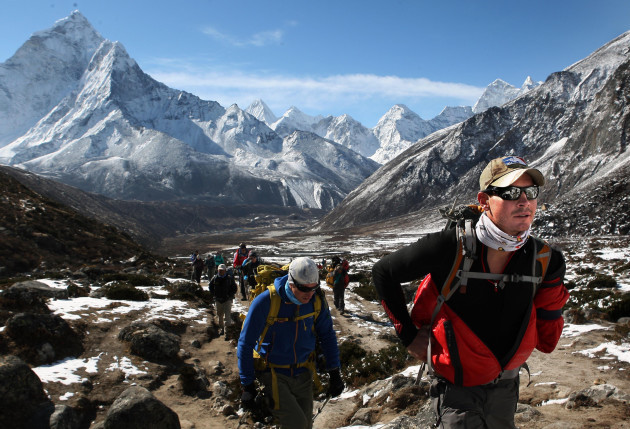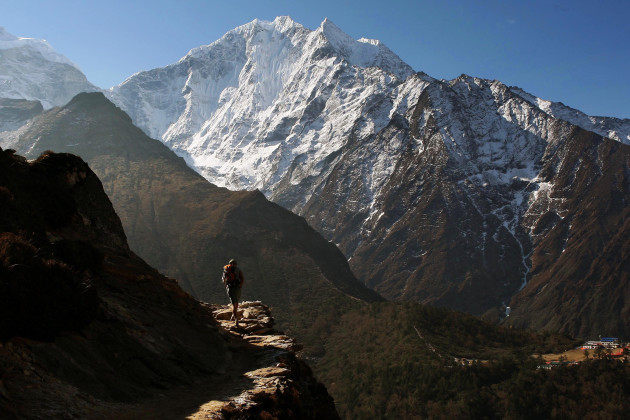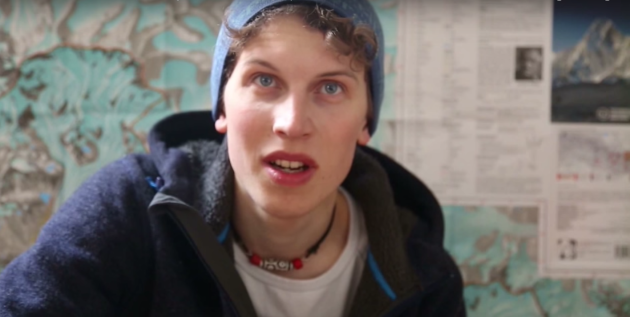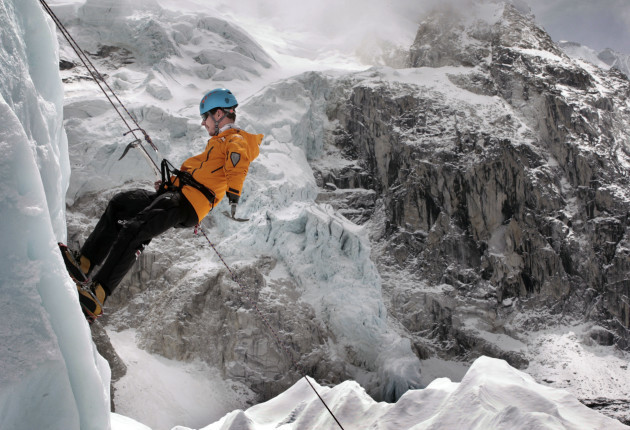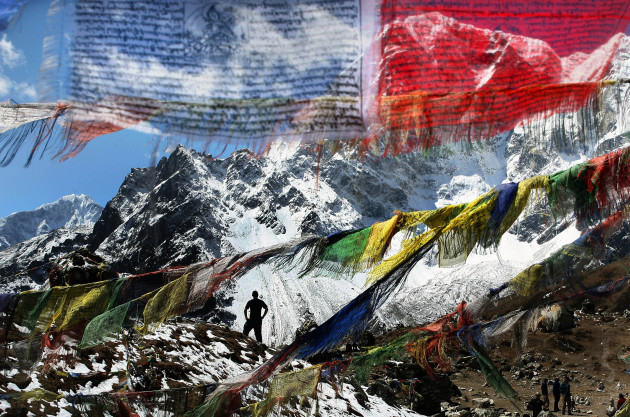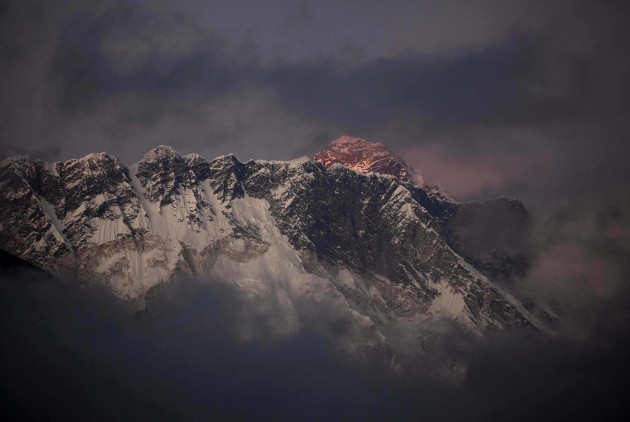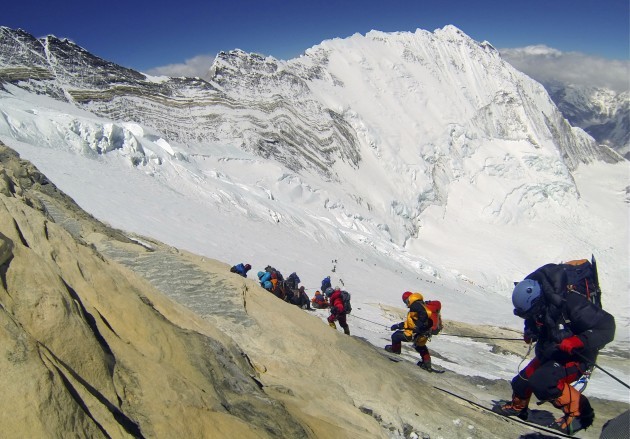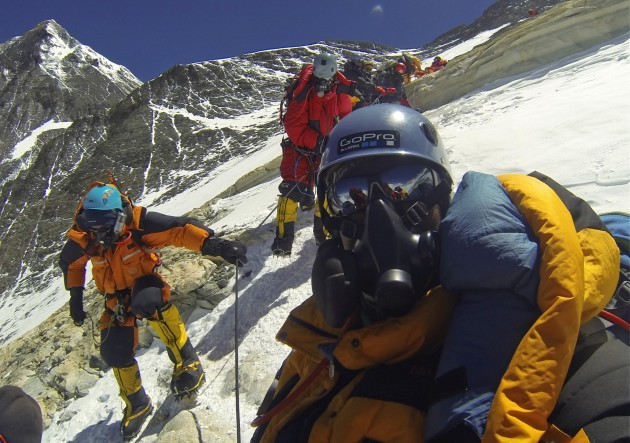“It is clear that the stake [the mountaineer] risks to lose is a great one with him: it is a matter of life and death…. To win the game he has first to reach the mountain’s summit – but, further, he has to descend in safety. The more difficult the way and the more numerous the dangers, the greater is his victory.”
- George Mallory, 1924
******
HE CERTAINLY WASN’T the first person to attempt to climb Mount Everest by using performance-enhancing drugs, but Jesse Easterling’s close brush with death made the mountaineering community sit up and take notice.
The 27-year-old insurance salesman from Seattle was attempting to scale Everest for the first time in May 2009, but by the time he stumbled into the emergency tent at Base camp, things had taken a turn for the worst. His life was on the line.
Earlier that day he’d completed his final acclimatisation tune-up on the mountain, making it up 23,500 feet to Camp III. But Easterling wouldn’t be making his planned summit to the top of the world the following day.
He couldn’t even speak his own name, let alone form a coherent sentence. He had a huge lump on the back of his neck and his manic state of confusion worried the two doctors in the medical tent.
Eventually, a Sherpa discovered an almost empty tray of dexamethasone in Easterling’s tent. Known as dex, Easterling had started taking the powerful anti-inflammatory steroid four weeks previously, with the expectation it would aid his ascent to the planet’s highest peak.
Dex has reportedly become a popular drug among mountaineers. Taking it as a once-off helps alleviate the effects of altitude sickness and many experienced climbers bring it along as a “rescue-drug.” It acts as an insurance policy to to give them enough time to descend from a mountain if they’re suffering at altitude.
After a month on dex, which was prescribed by a doctor he later successfully sued, Easterling became spooked by a large fat deposit on his neck and stopped his dosage in the days leading up to his final ascent.
The sudden cold-turkey stoppage sent his body into adrenal shock and triggered a psychotic breakdown. He was luck to be alive. The doctors administered Easterling a low-dose of dex and he was evacuated by helicopter to hospital, where he spent 12 days recovering in Kathmandu’s intensive care unit.
The first night in hospital he puked up half a cup of blood. In the end a blood transfusion saved his life. He was one of the lucky ones.
The Easterling case shed some light on high-altitude mountaineering’s complex relationship with performance-enhancing drugs. There’s been plenty of anecdotal evidence in recent years of the huge use of dex among alpinists.
The human body is not built to function at high altitude. Everest’s peak is 8,848m. Altitudes above 8,000m is referred to as the “death zone.” It’s thought no human can acclimatize that high up.
“There was one situation where I think it (doping with dex) was happening,” 24-year-old German Jost Kobusch tells The42.
“I was climbing Ama Dablam (a 6,812m peak in eastern Nepal’s Himalaya range) solo in 2014. Another team was spending too much time up there.
“They were showing some symptoms of altitude sickness and I think at that point they took dex to spend more time up there and to be stronger.
“When they took dex, the symptoms went away. It ended up with two of them dying up there because of a lung edema.
“There have been situations where I was sure people were taking dex because they were not feeling well and they wanted to stay up on the mountain.
“It’s not talked about much. But people disappear into their tents and they can do whatever they want inside them. Usually they won’t talk about it. I hear the stories about people using dex quite often.”
Dex is banned by the World Anty-Doping Agency (WADA), but that doesn’t appear to have affected its popularity. It is a cortico-steroid which suppresses inflammation, inhibits cerebral swelling and can be taken in the form of a pill or, in the case of emergencies, injected.
“You’re up there and you’ve got a problem,” explains Kobusch. “Let’s say it’s altitude sickness. You can easily get into a situation where you cannot move yourself anymore. When you can’t move yourself anymore, there’s a pretty high chance you’ll die up there.
“If I have to drag you down the mountain, I’ll have to spend a lot of energy and I could get frost-bitten. We could die together. So what will happen, somebody will give you dex. Usually in an emergency it’s an injection. And then you keep going. Basically it’s pushing down the symptoms.
“If you take dex in a non-emergency, you will not feel the symptoms. You will not feel it when you’re altitude sick. You could still be altitude sick but the drug got rid of those symptoms. So you are still feeling good but deep under that your body is already at the limit.”
As well as acting as a rescue-drug to help you get down, in the past 20 years climbers have discovered dex also works extremely well on the way up the mountain. It provides them with a new lease of life by masking, but not curing, affects of altitude sickness.
The problem is, take any cortico-steroid for over a week and the body’s immune system starts to shut down. You become extremely susceptible to infection and the adrenal glands that naturally produce cortisol stop responding to stress.
The body also quickly develops a tolerance for the drug, so find yourself in an emergency up Everest and re-administering dex will have little success.
“Once the symptoms show again, what will you do?” asks Kobusch. “Will you take more dex? You’ve already dex in your body so it’s not as effective anymore. In my opinion, it’s not only unethical, but also very stupid to take dex to climb an 8,000m peak.
“You’re putting not only yourself in danger but also the people that are with you, especially when you’re climbing in a team.”
One of the reasons dex is such a controversial subject when it comes to mountaineering is this: Despite plenty of anecdotal evidence, there’s little scientific data to prove that the drug is actually popular amongst climbers on Everest.
An explosive 2013 article in Outside Magazine explored the alleged rampant use of performance-enhancing drugs on Everest, and particularly the dex culture. It included the expert testimoney from altitude doctor Eric Johnson who estimated that 50 percent of climbers were using dex at Camp III and above.
But a recent study, Medication Use Among Mount Everest Climbers, on the use of PEDs on the world’s highest mountain has suggested otherwise.
“The piece in Outside Magazine relied on this one case (the Easterling case) and a variety of anecdotes and conversations with people in the climbing community to imply that dexamethasone use is widespread on Everest and other mountains,” explains Andrew Luks, a professor of pulmonary and critical care medicine the University of Washington.
“It really didn’t present any systematic evidence to back up those claims. We felt that some systematically collected data rather than just quotes from some people who have been there would be a good way to get a sense of the real extent of the medication use.
“There has been a lot of recent discussion in the medical literature, climbing community and lay press about the supposed widespread use of dexamethasone and other medications in the mountains.
“What struck us was that despite the various claims about how widespread the problem was becoming, there was actually no systematically collected evidence documenting the true extent of medication use.
Luks, along with respected altitude doctors Colin Grissom, Luanne Freer and Peter Hackett, produced the study which saw its results published in the High Altitude Medicine and Biology journal last month.
The study paints a different picture of the drug culture on Everest. Of the 187 anonymous respondents, who summited Everest 200 times between them, only 10 admitted to the use of dex. Furthermore, just three said they used it to increase their chances of reaching the summit.
The survey found that 43 percent of climbers took acetazolamide – a common drug used to combat mild altitude sickness. Acetazolamide’s usefulness is debated in the medical community and it includes only mild side effects. It’s high usage rate was not a surprise, given it is an widely popular drug amongst Everest climbers.
Another 4 percent reported use of sildenafil (Viagra), which increases blood flow and helps circulate oxygen to the extremities.
“The anecdotal evidence is just that… anecdotal and, as such, doesn’t really constitute evidence one way or the other,” continues Luks.
“Our study is the first attempt to do this on Everest and hopefully there will be more attempts in the future. Our study did have some methodological limitations that we describe in the paper that make it necessary to refrain from overly strong conclusions based on our results.”
Delving deeper into the study presents a number of problems. Firstly, the time frame of those surveyed ranged between 1963 and 2012 – an exceptionally wide period. It also only included about 15 respondents from 2014 and 2015 due to an ice fall avalanche and earthquake which seriously limited summit attempts both years.
“Our results may not adequately reflect the current practice of medication use on the mountain,” admits Luks. “So, more data would be useful to further clarify the issue.”
But most notably, of the 187 climbers who were asked about their use of dex, 46 refused to answer. In comparison, only 25 failed to indicate whether they had used Acetazolamide or not.
It makes you wonder. Why would somebody admit they cheated to reach the pinnacle of their climbing career?
“It’s like doping,” Kobusch says. “If somebody is doping, he will not tell you. It’s something done secretly. We know it’s being done, but nobody will say, ‘Hey I took dex today, that’s why I’m so strong.’ It doesn’t work like that.”
Another study of altitude medication by Frenchman Paul Robach appears to back up Luks’s figures. Robach, a regular reporter on the issue of blood doping in sports, collected urine from a bathroom in a Mount Blanc refuge hut and tested the samples for drugs.
Just 3.5 percent tested positive for glucocorticoids, the class of steroid that dex belongs to. However it must be noted that the peak of Blanc, which lies on the border of France and Italy, stands at 4810m, while Everest is some 4,000m higher.
The need to take dex would be far greater on Everest, which is nearly twice its size. Everest also also inundated with far more inexperienced climbers, thanks to a dramatic rise in commercial expeditions up the mountains.
Climbers spend at least $30k, according to Kobusch, and almost eight weeks at Base Camp to acclimatise before they attempt to summit. The opportunity to reach the top of the world is expensive and time-consuming. Rookies will take any means necessary to ensure their one shot at glory is successful.
Mountaineering has a difficult relationship with doping that is far different to other sports. While the sport does fall under WADA rules, drug testing climbers is pretty much impossible. Besides, the sport is unique in that it lies in the grey area between athletes taking drugs to stay safe, and taking them to get an unfair advantage.
Mountaineering has neither rules nor head-to-head competition, so is it even relevant to accuse climbers of cheating? Then again, records do exist, so climbers are competing indirectly against one another to become record holders.
It’s important to note that there’s little controversy over mountaineering’s most potent performance-enhancing drug: bottled oxygen. The use of oxygen is widely accepted in the alpinist community. In Medication Use Among Mount Everest Climbers, just 2.5 of climbers believe it’s unethical to use oxygen to climb Everest.
For climbing purists like Kobusch, using oxygen to scale a mountain represents a form of cheating.
“I wouldn’t say it’s unethical,” he says. “Using oxygen doesn’t harm anybody. But if you take dex, it can harm you or put people in danger.
“I wouldn’t say it’s unethical to use oxygen but I would say it’s cheating. If you use oxygen you’re cheating, it’s like doping. It’s basically doping.
“It’s doping with less risks. You’re just making the environment suitable for your needs, for your strengths, for your abilities. And that’s cheating.
“For me, there’s no option. If I can’t climb without oxygen I won’t climb because that means I’m not ready. I’m not strong enough.”
Despite Kobusch’s view, oxygen is undoubtedly the king of all PEDs on Everest and the drug of preference among the vast majority of climbers.
It’s estimated 1.6 percent of people who attempt to climb Everest die on the mountain. Kobusch himself was on Everest for the mountain’s deadliest ever disaster in April 2015 and was fortunate to survive.
A 7.8-magnitude earthquake hit Everest, causing a devastating avalanche which killed 22 people, and Kobusch was at basecamp where he managed to capture the terrifying incident on camera.
In a sport where the only true competition is Mother Nature and winning the game means reaching the mountain’s summit before descending safely, the use of performance-enhancing drugs is unlikely to stop anytime soon.
